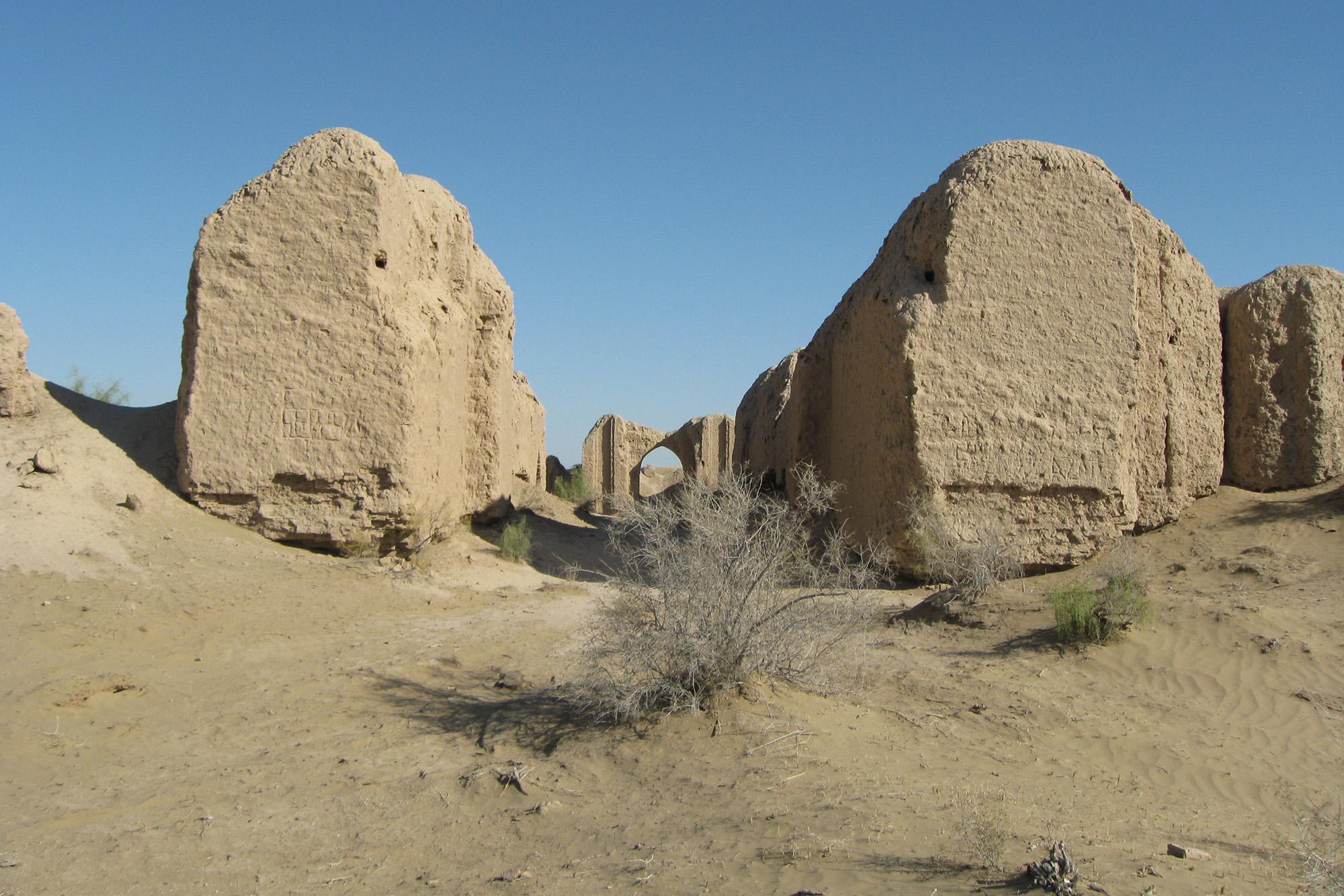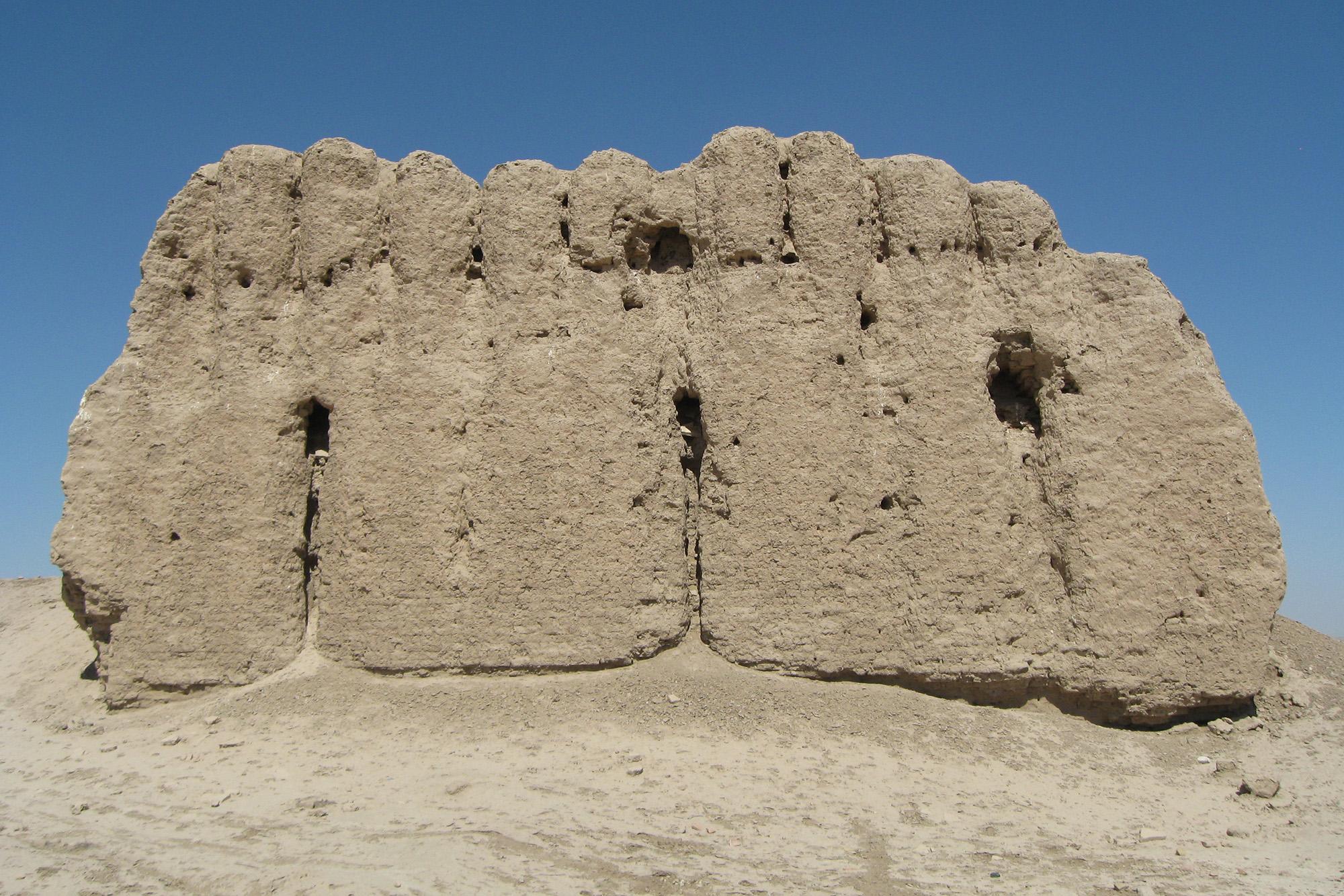Akja Gala Caravanserai

In the vast arid landscape of Turkmenistan, it may seem odd to find a small settlement surrounded by nothing else. But it was exactly because of this isolation that Akja Gala Caravanserai was established here more than 1000 years ago. Traders traversing this section of the Silk Roads would call into the caravanserai to escape the tough conditions, taking time to rest and replenish their supplies.
The Akja Gala Caravanserai was in use from the 9th to the 12th century. Although it is now in ruins, a large number of its walls and other structures are still somewhat standing, so you can walk through it and get a sense of how it would once have been when it was full of people and animals.

Rectangular in shape, it's about 150 metres long and 80 metres wide. Entering from the south, the first section was a large courtyard surrounded by two rows of galleries for animals and goods, while spacious domed common areas either side of the entrance were used by merchants to relax or talk business. The other section of the complex was slightly smaller, with a central courtyard leading to open galleries and smaller private rooms known as 'hujra' that would have been used for sleep or other private activities. There was also a special prayer room here with a mihrab.
While the Akja Gala Caravanserai is one of the best-preserved sites along this stretch of the Silk Roads, there are a few other nearby components that you can also visit that will help give you an impression of how it would have been to travel through the region as a trader all those centuries ago. Just five kilometres away is the Gyzylja Gala Caravanserai, which was made up of two separate walled courtyards about 80 metres apart. Each one was a rough square with approximately 55-metre sides that had rooms around the inside of the walls. You can make out some of the main fortifications of the caravanserai but there is not much left of the interior.

About five kilometres away in the other direction is Tahmalaj, which is a type of rest stop called a köshk (from which the English word 'kiosk' is derived). It is much smaller than the nearby caravanserai and would have been used by a different type of traveller. Square-shaped with sides of just 15 metres, it had two floors with nine small rooms on each floor. You can still see the domes that decorated two of these interior rooms.

